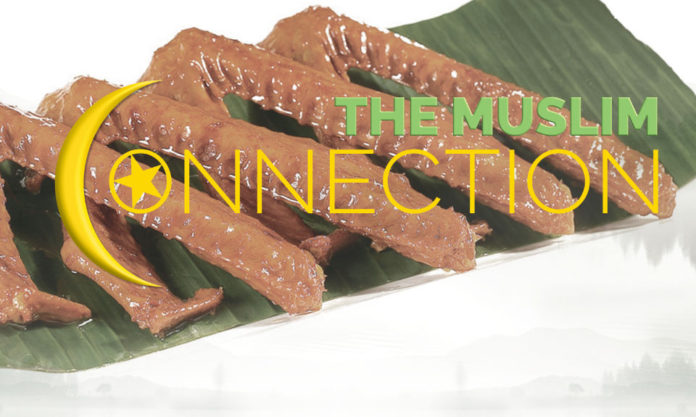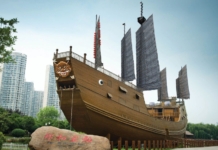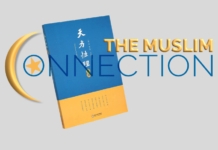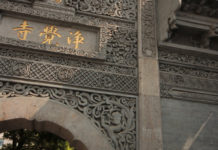Today, Nanjing is host to a small variety of halal-certified restaurants. One can find Turkish fare in Xianlin, Xinjiang-style barbeque and dishes throughout each district, local Nanjing cuisine in Gulou and simpler, cheaper Northwestern Chinese fare in your next-door Lanzhou Noodle Shops (兰州拉面馆).
With Nanjing an Islamic draw for eons, it’s no surprise that some such places are among the most well-known historical food establishments in the city.
Given the burgeoning Muslim presence in the city over the years, halal restaurants naturally began growing in number to meet the community’s diet. Today, food establishments and products considered allowable within the Islamic diet are labeled with the Arabic term, halal (meaning permissible). In China, most Muslim-friendly restaurants will either hang the Arabic term or the Chinese label, qingzhen (清真), on their walls to signal affiliation.
As mentioned in our first instalment last month, the Muslim population in Nanjing reached an all-time high during the Ming Dynasty. It was not long after, in 1845, that the longest-running food establishment, Ma Xiang Xing (马祥兴), was first registered.
According to the restaurant’s history, a Muslim farmer from Henan, named Ma Sifa (马思发), had fled natural disaster in 1840 and found refuge in Nanjing. Settling in a corner of today’s Huashen Miao in Yuhuatai District, he set up a little food stall to make ends meet, selling cheap halal eats.
A loyal customer base included locally-stationed Taiping Rebellion troops and farmers. As the business grew, Ma’s son officially established the restaurant with its current-day name and moved not far to near today’s Yuhuatai, where a significant Hui neighborhood was then situated.
In the Republican era, Ma Xiang Xing quickly developed into a high-scale establishment. By this time, management had been passed on to the third generation and the restaurant moved to today’s Yuhua Lu outside Zhonghua Men. As the menu expanded beyond the initial, beef stir-fried with vegetables, to include today’s badly-named “Squirrel Fish” (松鼠鱼; deep-fried fish coated in a sticky, sweet-sour sauce) and more, its popularity grew. Before long, the restaurant became a common dining site for Kuomintang officials and even foreign dignitaries. Today, Ma Xiang Xing is situated along Yunnan Bei Lu and offers its sumptuous, higher-end restaurant alongside a small, affordable eatery next door.
Not so far away, along today’s Wangfu Da Jie lies yet another halal Time-Honored Brand (老字号), An Le Yuan (安乐园). Founded in 1920, the restaurant first started along today’s Pingshi Jie and moved three times to different spots around Chaotian Gong over the years, before settling in its modern-day location. Best known for its steamed buns (beef and vegetarian options) and sweet red bean rice ball soup (赤豆元宵), like Ma Xiang Xing, An Le Yuan also hosts both a formal dining experience alongside its fast-food establishment next door.
One should never forget the all-important duck that is Nanjing’s local specialty. Given that the Islamic diet required a specific slaughtering method, many butcher shops were owned and managed by Muslims. In 1945, Nanjing listed 85 establishments within the city limits that sold duck, chicken and geese. Of those, fully 56 were owned by Hui individuals.
As a testament to that history, one of Nanjing’s current highest-ranking purveyors of salted duck and roasted duck is Jin Hong Xing (金宏兴) on Mingwalang. Even today, the tiny stall opens early in the morning and often sells out before 4 in the afternoon.
The management of these stores’ halal recognition is typically monitored by the Nanjing Islamic Association, the members of which are often employed by the three city-centre mosques. And it is to these historic architectural sites that we turn our attention next.












